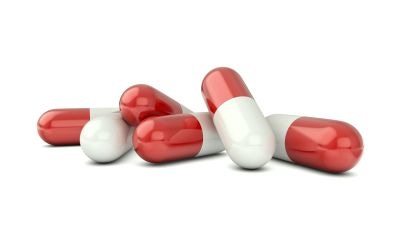June 15, 2012

When most people think of delivery systems for dietary supplements, they think of powder-filled capsules, tablets and softgels. However, the liquid-filled, hardshell capsule is another option that provides formulators and marketers with a unique delivery technology. Just as dry ingredients can be encapsulated in two-piece, hardshell capsules, liquids can also be filled into hardshell capsules. While softgels are well suited to many formulations, hardshell capsules can often be a viable alternative that allows for the creation of aesthetically pleasing finished products, and can offer advantages and points of differentiation compared with softgels.
When compared with a hardshell capsule, the physical properties of a softgel are significantly different in a number of areas. Hardshell capsules tend to have lower water content, exhibit less permeability to oxygen and moisture, and are more resistant to the migration of the contents into the capsule shell (and vice versa). The presence of plasticizers such as glycerol in the shell of soft gelatin capsules can contribute to this migration. Likewise, it is also possible for the plasticizer to migrate from the capsule shell into the contents of the capsule. Liquid-filled capsule shells do not contain plasticizers and, therefore, have a decreased risk of migration. Based on the sensitivity of the ingredients in the formulation, this can be an important consideration when selecting the form of delivery. Additionally, to help protect sensitive ingredients, the hardshell capsule can also be purged with nitrogen to minimize any contact with oxygen.
The properties of the hardshell capsule also allow for materials to be filled at a higher temperatures. Although most filling is accomplished at room temperature, some ingredients need to be heated in order to become flowable. Hardshell capsules can tolerate higher temperatures during filling, which can allow for the use of a wide range of ingredients and excipients.
Another unique property of the hardshell capsule is its ability to minimize the odor of certain ingredients. For example, some ingredients, such as krill oil, have a naturally undesirable odor. However, due to the reduced permeability of the capsule, liquid-filled capsules tend to exhibit a better odor profile compared with softgels.
Over the past few years, there has been an increase in the use of technologies designed to enhance the bioavailability of ingredients that are otherwise difficult for the body to absorb. These bio-enhanced delivery systems are often liquid-based and are not suited to a powder-filled capsule. The liquid-filled capsule can be another alternative to softgel capsules when considering these delivery technologies.
Working with hardshell, liquid-filled capsules does not limit a manufacturer to only using liquid ingredients. In fact, dry ingredients can be mixed with liquid ingredients and then encapsulated, giving companies the ability to create unique product formulations.
From a marketing perspective, liquid-filled capsules also present excellent branding opportunities. Capsules are available in many colors and can be customized with a logo as well as text. Depending on the content of the product and how it will be marketed, various types of capsule shells are available, including traditional gelatin, and fish gelatin, as well as plant-based capsules. Eye-catching, time-release formulations can also be developed that incorporate beadlets designed to release contents over a specific time frame. One of the most unique possibilities with liquid-filled capsules is the potential to create a capsule-in-capsule product. This is a delivery system in which a smaller capsule can float inside of a larger capsule. The capsule-in-capsule system can be used to deliver different ingredients to different areas within the digestive system, keep ingredients separated within the same product, and create a look and feel that causes the product to stand out from others on the shelf.
Andrew Halpner, Ph.D., received his doctorate in nutrition from Tufts University School of Nutrition Science and Policy. His extensive research and interests focus around antioxidant nutrients, including their interactions and abilities to prevent and treat age-related degenerative illnesses. Halpner has lectured nationally and internationally on various topics pertaining to nutrition and is the author numerous research articles. Halpner is currently vice president of product development and technical services for Alcrea Health and Douglas Laboratories.
About the Author(s)
You May Also Like




.png?width=800&auto=webp&quality=80&disable=upscale)